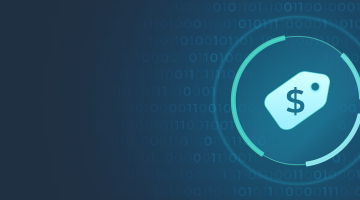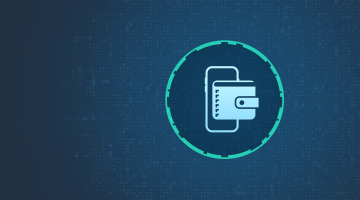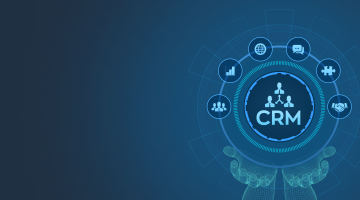

List of the top banking software to use in 2024
Digitalization is changing the world. It’s especially true in the world of banking, where many companies fight for their customers. Thus, to be successful in financial services, a business has to offer the best banking software, and remain convenient, reliable, safe, compliant, and modern. A few years ago, traditional banks were the kings, so they could afford certain flaws and issues. Today, the situation is entirely different.
Many fresh fintech startups confront traditional businesses. Many consumers prefer fintech apps to banks as they provide superior customer service and support. Modern fintech apps offer AI-powered chatbots, customizable dashboards, personalized financial advice, integration with social media, gamification, robo-advisers, and more. It goes without saying that fintech development has revolutionized the way many financial organizations operate. The same goes for banks. The latter, not to lag behind competitors, put digital transformation first, rethinking the way they operate and provide services. 24/7 customer support, instant payments and transfers, mobile access — all that consumers could ever dream of has been brought to life.
It’s now possible thanks to top banking software systems. So, how do these solutions work? What are the most famous examples? Which functions and modules are essential for the best banking software? Let’s find out in this guide by banking experts from DICEUS!
Are you searching for a software vendor? Here’s more information about software development for financial services.
Banking software trends
First off, we want to start with a brief overview of the modern digital banking universe. To understand how the related software works and how it can help your business, it’s essential to know the recent trends. The majority of top banking software companies take these tendencies into account to provide the most demanded services or products. So, here’s the question.
So what do you think, what are the trends in the development of banking software for the next few years?
- Trend 1. A bigger number of communication channels: Mobile applications, web apps, chatbots, and digital assistants, and much more. By introducing more communication channels, banks can attract more customers, provide personalized offerings, improve cross/up-selling efforts, increase revenue, enhance customer loyalty, and gather customer analytics for data-driven decision-making.
- Trend 2. A shift to digital banking software solutions: Buying services and solutions doesn’t require face-to-face communication with bank workers. By shifting to digital banking, banks can become branchless and paper-free organizations offering most products and services online. This shift can significantly reduce labor and operational costs, automate many processes, and enhance customer experience.
- Trend 3. Artificial intelligence: Machine learning and cognitive computing will grow banks’ revenue. By implementing AI solutions to detect fraud, for example, banks can reduce financial losses and protect their customers’ accounts and personal data. AI-fueled chatbots can provide instant customer assistance by guiding them through FAQs or offering the right service.
- Trend 4. Digital-only banks: No branches, offices, or extra financial software development costs for their maintenance. We mentioned that the shift to digitization can make banks paperless and branchless, resulting in lower operational costs. Additionally, banks can save costs on software development and maintenance as they won’t need as many IT guys as they have with traditional models.
- Trend 5. Front-end and back-end modernization: Banking software applications become legacy systems over time. Outdated core systems, old banking programs, apps with unattractive interfaces, and complicated user experiences — all require continuous updates and upgrades. So, banks invest in new technologies to simplify the modernization processes and make them more efficient.
Why do we expect to see an increase in spending on banking automation solutions? Trends require banks to become more digital to meet all the requirements and expectations of the clients. We can admit that this is not the cost growth but efficient investment in top banking software solutions. Now, let’s look at the basics of our topic and then dive into detail.
Get professional consulting on banking software development and implementation.
What does banking software mean?
What is banking software for the fintech industry? Shortly, it’s a means of communication between a bank and a user. It serves to improve the workflow inside the company and its branches, for easy investment policies, and to provide the services that solve the users’ needs.
Here are three major requirements for the banking software:
- Powerful – no delays, mistakes, or crashes
- Cross-platform – it can be used on any platform and on any device
- Secure – no access to the data by third parties
Key functions of banking software solutions
There are many types of banking software, but they often share the same set of features. The thing is that many systems are packaged. Vendors sell them to various market players. That’s why the presented functions are generalized to satisfy all customers of top banking software companies, from small fintech startups to multinational corporations.
On average, the list of features looks as follows:
- Customizable interfaces
- Data management and history tracking
- Documentation
- Online lending
- Financial instruments, investments
- Live customer support
- Mobile version
- Online deposits
- Self-service options for clients
- Online payments and bills
- Transaction processing
Unlike off-the-shelf solutions, custom tools developed by dedicated vendors can include other functions. If you know what financial software is and realize which business goals you can cover with it, a custom development team like DICEUS can build software solutions tailored to your needs specifically.
You might be interested in learning more about the usage of AI in banking industry.
Top advantages of custom banking software
Financial institutions choosing custom software development benefit in the following ways:
Tailored functionalities. Unlike ready-made software, bespoke financial software for banks is designed and built according to unique requirements and business goals. Usually, a development process starts with a discovery phase, also called business analysis, that allows a development team to discover all the challenges, pain points, and frustrations of users with current solutions, pinpoint the ways to address those and offer the best suitable solution.
Non-functional requirements. Custom software for banking industry is developed considering not only functionalities banks would like to have, but also non-functional requirements such as scalability, flexibility, compliance, operability, and many more. For example, when a bank adds some new services or expands its customer base, scalability should be taken into account to scale up or scale down the capacities.
Integration with DWH. All software used in banks is interconnected: systems exchange data and information taken from databases or a data warehouse. The latter provide information to core banking systems that, in turn, are integrated with CRM solutions, mobile applications, web portals, loan processing, accounts, transactions, analytics, and others. Custom solutions can be more efficiently integrated within the banking IT infrastructure thanks to DWH.
Competitive advantage. Providing customers with innovative digital solutions like custom mobile banking applications or AI-powered chatbots can make a difference. Modern users would prefer doing everything they need in a mobile app instead of going to the physical bank branch. Today, consumers value quick inquiry processing time, instant support, user-friendly access to all banking products and services online, clear user journeys, etc.
Want to learn more about tailored banking software applications? Check what we do.
Banking software modules and integrated tools
Let’s also check out how banking software works. According to the features listed above, there are a few basic modules that host these features. Depending on the chosen architecture model, these modules can work together or independently, allowing customer banks to turn them on and off. The best online banking software usually centers around several essential modules that cover all the areas of client demand.
- Core banking
- Corporate banking
- Credits and loans
- Fraud management
- Investments
- CRM and marketing activities
- Operational intelligence
- Regional and local support
- Risk management
- Wealth management
Types of banking software
It’s impossible to imagine any retail bank without the best online banking software. Surely, today, banks can offer their services round the clock for all clients in any part of the world. Custom solutions give banks a chance to fully satisfy the needs and requirements of their clients.
The latest trend in the private banking niche is digital-only banking. Obviously, banks exist in an online world without ground branches. Clients use their mobile devices, watches, or other IoT gadgets. Banks get closer to their clients, and it’s much easier to forecast revenue with e-banking software.
SMS banking software
There’s no need for the clients to own a smartphone to get the most from SMS banking features. Most banks provide their clients with the opportunity to pay bills, enable or disable some services, and so on. Everything required is a short message.
What is banking software for SMS? Usually, it’s a set of three key features:
- Recharging. You can replenish your mobile phone account or any prepaid service, order a loan without plastic cards, etc. It’s available round the clock.
- Paying postpaid bills. One message is enough to make payments.
- Access to information. A client can request any information about transactions or personal accounts with an SMS.
Top 10 banking software firms offer basic SMS services. However, the development requires a thorough approach to make the final product robust and user-friendly. There shouldn’t be complicated commands or lines for the clients. Simplicity is the key to success here.
Learn more about our engineering services for mobile banking.
Merchant banking software
Merchant banks differ from retail banks as they’re more like investment banks, providing their services to businesses, not individuals. Which software used in the banking sector can satisfy merchant requirements? Overall, it has to offer features for collecting information, processing it, and storing it. It can be a portfolio, information about funds or accounts, history of trades, and so on.
It’s good to have a software solution that will help banks track transactions and get accurate reports on every portfolio. The user-friendly interface of the software should comprise various charts, analytics, and other blocks of data. Everything should be easy to access and perceive in real-time.
Top banking software should have a high level of security to prevent any data leakage. The work of security solutions shouldn’t make the overall workflow slower or influence it anyhow. Bank employees should have limited access to information depending on their position in the enterprise and the tasks they need to solve.
You might be interested in learning more about mobile banking risks.
Investment banking software
The fintech industry and investment banking niche aren’t overloaded with a large number of software solutions for automating everyday processes. What we have now is a pack of services or cloud solutions that solve very specific tasks. What banks require is the best banking software solution that will comprise improving the workflow inside the company and the quality of services.
Most banks provide complex transactions and deal with huge enterprises where there’s a need to process big blocks of data in no time. Open-source solutions are not a good fit here. The less human work is required, the more revenue an investment bank can gain. Online access to any piece of information that is updated in real-time lets the enterprise show a better market performance.
Top 10 banking software examples
According to different estimations, 10 leading financial software companies control almost 50% of the market. The list includes Microsoft, FIS, Fiserv, SAP, Oracle, Temenos, SAS, and others. But we also can look at the list of top 10 banking software solutions and exact products. They feature different functions, from core banking to digital-only offers. You can explore these systems to find out if they suit your needs.
- Temenos
- Finastra
- Oracle FLEXCUBE
- EBANQ
- BankWare
- Mambu
- CorePlus
- FIS Profile
- Avaloq
- Cleartouch
Top banking software comparison
| Feature | Temenos | Finastra | Oracle FLEXCUBE | EBANQ | BankWare | Mambu | CorePlus | FIS Profile | Avaloq | Cleartouch |
| Core banking | Yes | Yes | Yes | Yes | Yes | Yes | Yes | Yes | Yes | Yes |
| Cloud-based | Yes | Yes | Yes | Yes | No | Yes | Yes | No | No | Yes |
| Modular | Yes | Yes | Yes | Yes | Yes | Yes | No | Yes | Yes | Yes |
| Multi-currency | Yes | Yes | Yes | Yes | Yes | Yes | Yes | Yes | Yes | Yes |
| Multi-lingual | Yes | Yes | Yes | Yes | Yes | Yes | Yes | Yes | Yes | Yes |
| Mobile banking | Yes | Yes | Yes | Yes | Yes | Yes | Yes | Yes | Yes | Yes |
| Customer support | 24/7 | 24/7 | 24/7 | Business | Business | Business | Business | 24/7 | Business | 24/7 |
Of course, if you need custom software development, implementation, or certain level customization, be sure to reach us. We provide free consultations to help you understand your needs and identify the best banking software option.
Top banking software companies
Well, you already know that there are many vendors on the market. Usually, they develop and sell one or a few products that are similar for all customers. And this approach represents the first way to invest money in the best core banking software. Basically, you purchase a system from Microsoft, Oracle, FIS, SAP, or another team. Further, you may want to invest in customization.
If we take the US, the average yearly income of a software developer is $100,000. There’s a need to have a team with the project manager and a team to cope with each step of the software development cycle. There are a few disadvantages here:
- You have to pay salaries even if no projects are being developed at the moment
- You have to hire a banking software company, even for a tiny project
But there’s a second option. It’s outsourcing development. What you have here are top banking software companies that act out as in-house teams with the difference that they are located outside the office. Depending on the project, it can be developed in a month or a few months. You have a fixed price for the project that is divided into milestones.
The cost of the project depends on the number of hours that the team spends on work and its complexity in general. The sum may vary from tens to hundreds of thousands of dollars per project.
How much do you need to pay for custom development services? Here’s a calculation for you.
Why choose DICEUS as your banking software development company
We’ve developed various projects for banks, and we’ve come to use agile methodology to make processing time- and cost-efficient. We present ourselves not just as an outsourcing company for solving some tasks. We don’t just sell hours of work performed by our team members. Instead, you can get the best banking software from our team that cares about your success.
The Agile approach for building banking software allows us to deliver solutions that will let each enterprise reach its business goals. We have a list of technologies that are interchangeable. We don’t stick to some specific tools or frameworks, and this gives us complete freedom to find or even create the best solutions for our clients.
How’s the best core banking software or another bank-related tool developed?
Building a project is a great challenge, as the quality of the final release will influence the bank’s revenue in the future. Here are the major stages in the development lifecycle:
- Business analysis. All banks seem to have the same tasks and operations, but there’s a need to define what’s required for a specific enterprise. There’s an analysis of what is happening at the moment and what has to be improved.
- Project planning. It’s time to define the goals, deadlines, and milestones. It’s also time to choose the number of coders and the amount of time required to perform the tasks.
- MVP delivery. This version of the best banking software will let you fully test all the operations and transactions that will happen in real life. It’s time to make updates, too.
- End-to-end development. It’s a situation where you delegate the task of building a new project from the very start to the very finish line.
Types of banking software matter. Similarly, the quality of the software matters. Choosing a software development vendor should be thorough, making sure there are enough certified developers and the choice of the stack is wide enough. At DICEUS, we’re proud of delivering only high-quality services for banks. Contact us to find out more details about how we can help you.
Download a guide on how to upgrade core banking in 12 months
FAQ
Why the best banking software is critical for financial companies?
It’s pretty simple. In the era of omnipresent digitalization, businesses can’t survive without digital solutions. As for banks, they confront new fintech startups today. Consequently, they have to attract or retain customers to flourish, providing convenient, seamless, and efficient services. However, it’s possible only thanks to banking solutions that automate and facilitate operations and boost user experience.
Which software used in banking sector is the most popular?
Technologies change regularly, but there are a few highly-demanded languages and frameworks. Generally, the top 10 banking software tools rely on .NET, Python, Ruby, and Java. Also, there are specific technologies for core banking development: Oracle FLEXCUBE, Finastra, Temenos, etc. Finally, specific middleware includes Corezoid, Fiorano BPM, and Activiti BPM.
How much does the industry pay for the best online banking software?
Banks invest billions of dollars in software development. Usually, the cost depends on multiple factors, including the scope of the project (number and complexity of functionalities and features, the level of customization required, implementation and integration complexities, etc.
What is the significance of banking software in the financial industry?
Banking software automates a wide range of banking processes, including account management, payments, transactions, loans, compliance, and many more. Modern software for banks offers mobile and online banking, which improves customer experience by providing round-the-clock services and support. Tools for risk assessment help financial institutions identify risks and create strategies to mitigate them. Besides, current solutions offer robust data analytics to capture, store, and analyze vast amounts of data, including data about customer interactions and behavior, preferences, and market trends. This data allows banks to improve customer experience, cross/up-selling strategies, and marketing campaigns.
What are some key features to look for in the best banking software?
The best banking software should be reliable, scalable, and have all the needed features for efficient operations and excellent performance. Banks should have a core banking system as a central point of all operations. It would be great if it is a cloud-based platform offering multi-currency and multi-lingual capabilities, mobile and online banking, compliance tools, and integration APIs.
What security measures should the best banking software have?
We recommend having the following security measures: encryption, multi-factor authentication, access controls, regular security updates, fraud detection and monitoring, user education and awareness. When developing software for a bank or a fintech company, our team considers all security measures to be introduced and implemented before the development.
How does the best banking software address the needs of mobile banking users?
Nowadays, modern consumers of banking services want to see user-friendly interfaces of mobile banking apps, have the ability to manage their accounts and deposits, be notified of due dates and essential news, get personalized offerings and instant responses to their requests. Besides, such innovative things as robo-advisors, chatbots, or gamification also add to an excellent customer experience.





